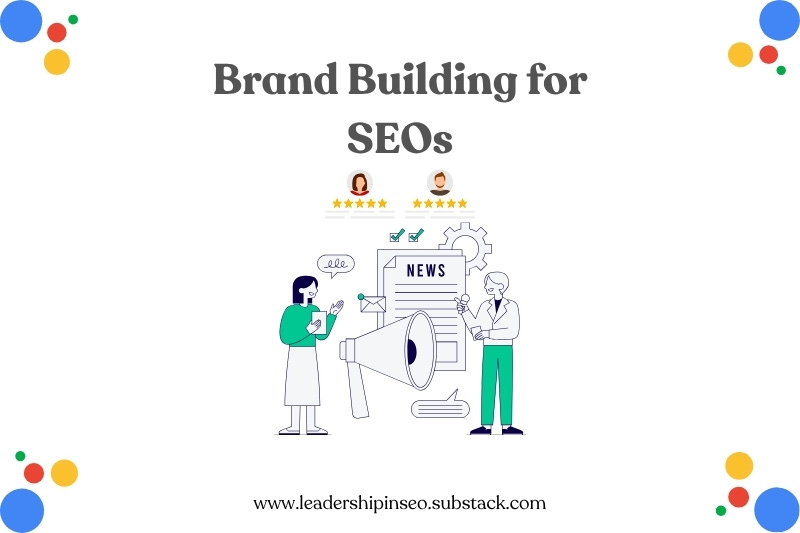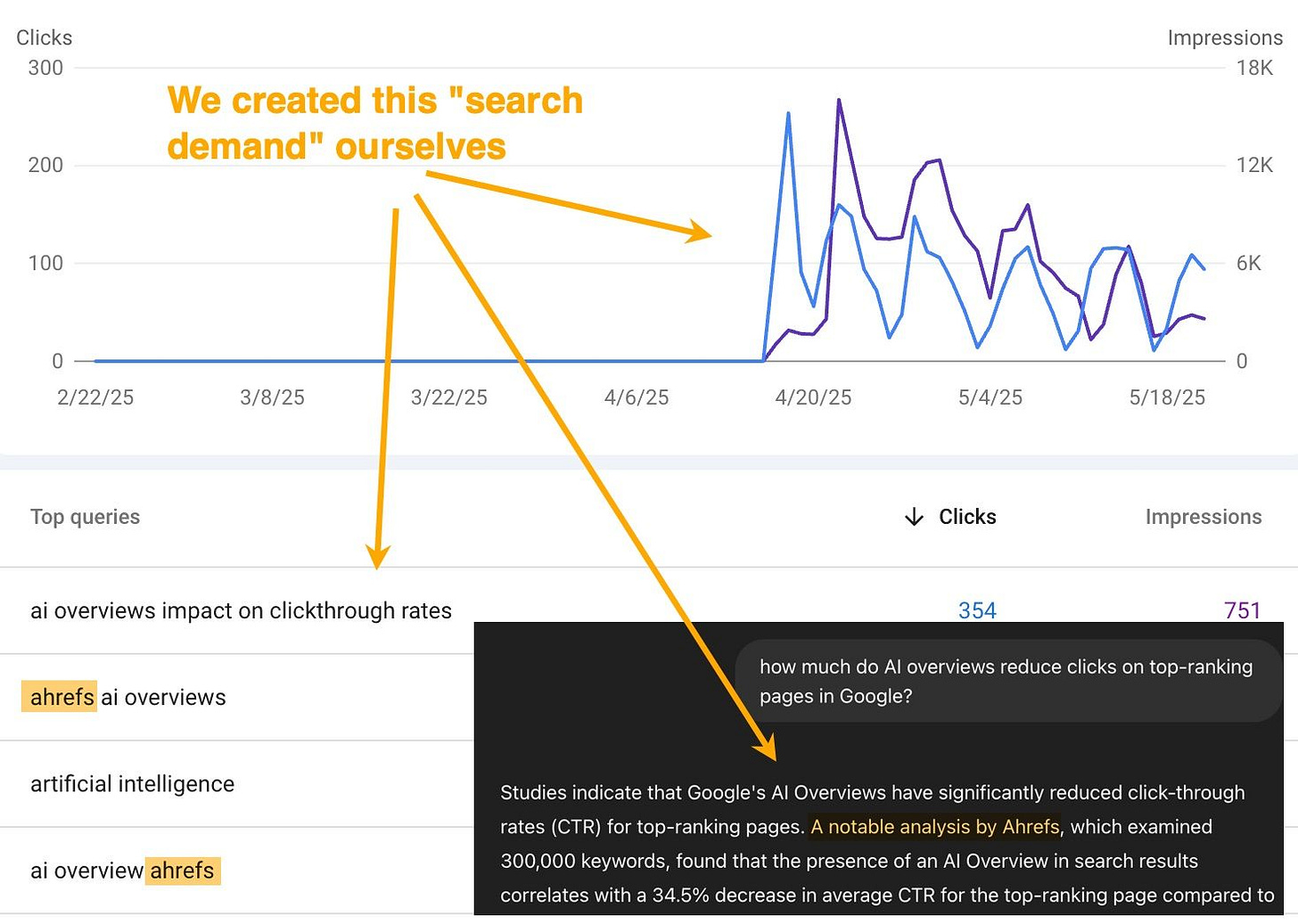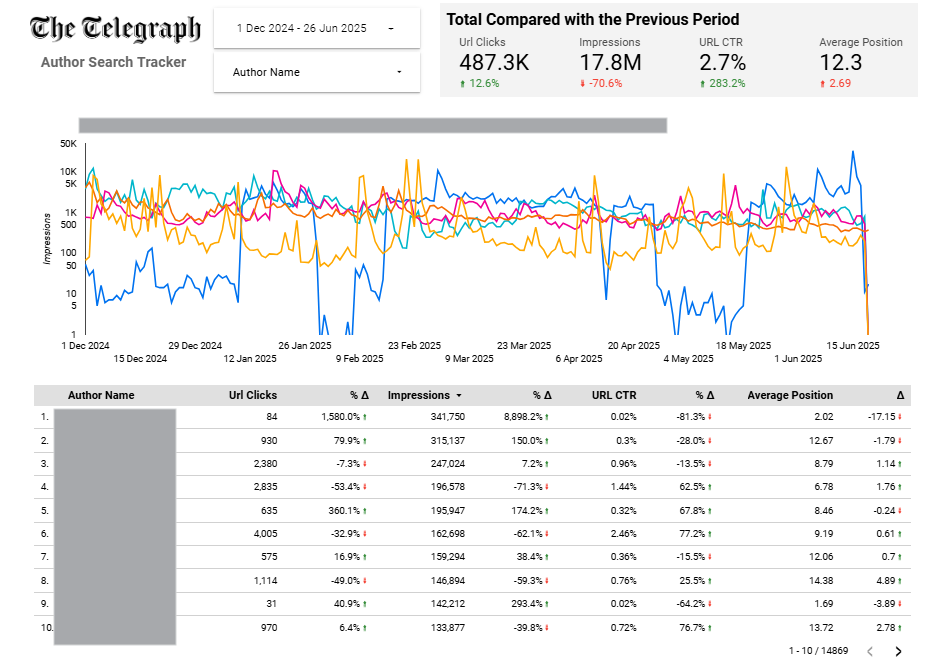How to Build a Brand (with SEO) in a Post AI World
Strap yourself in and become the most cited and talked about brand in your industry by ALL hallucinatory robots.
I should probably start by saying I don’t know exactly. The AI apocalypse hasn’t quite driven us to the point of complete madness (although we’re certainly close) and we don’t have any usable case studies.
Neither I nor we as an industry are brand builders. We’re click bringers. Revenue drivers. ‘Free traffic’ getters. A phrase that has tied the industry and our work to cheaper notions. (Notions I no longer wish to be associated with.)
Based on these two crucial pieces of evidence, you’d be well within your rights to think that I have no idea what I’m talking about. I don’t work in brand marketing and we can’t see the wood for the hallucinogenic trees.
But there are clues we can piece together. Clues from the Google leak. Pieces of evidence from citation-based analysis in LLMs. AIO and LLM-based ‘ranking’ factors. Things you should consider.
TL;DR
AI is reshaping brand visibility - Traditional metrics like share of voice are becoming less useful as ranking will become probabilistic, not deterministic. LLMs surface brands they’ve seen cited often and positively.
Brand strength is power - From Google’s leaked docs and the DoJ rulings to Ahrefs’ AI visibility analysis, branded searches, entity authority, anchor text, and site sentiment may define organic performance.
You have to create demand - You need to build branded, searchable demand. Make stuff that gets cited, linked, talked about. Tools, reports and repeatable content.
Trust, not (just) traffic. Branded search volume, AI visibility, review sentiment, CTR vs. expected, and topical authority.
And yes, literally everything can be manipulated.
How has AI changed brand visibility?
Traditional average rank metrics and share of voice seem to be on the brink. Albeit this has also been driven by an increase in personalisation across SERPs. But when ranking is probabilistic and AI ranks passages, not pages (blah blah blah), it’s trickier to track.
If you haven’t read Stephen Wolfram’s excellent piece on how ChatGPT (and other LLMs) work, you should. I think it perfectly articulates how these models function and why they’re both brilliant and intrinsically shit for exactly what we use them for.
Our jobs.
The first thing to explain is that what ChatGPT is always fundamentally trying to do is to produce a “reasonable continuation” of whatever text it’s got so far, where by “reasonable” we mean “what one might expect someone to write after seeing what people have written on billions of webpages, etc.”

These word predictors are trained on a vast corpus of information. Like the universe, it’s continually expanding. Understanding this helps us see why brand visibility in SEO is changing slightly.
Randomness is essential. It’s how we prevent the machines from blithering out the same detritus. Yes, it might be right. But it’s fucking boring.
Actually it might not be right…
I recommend reading this very good guide on how temperature scales work with LLMs and how it can really impact the user base.
Higher temperatures (creative nonsense)
Higher temperature increases randomness and creativity
It can encourage user engagement and lead to longer sessions, but requires more prompt refinement
Essentially, a model that is far more likely to brainfart nonsense at you.
But much less likely to repeat the same drivel time after time after time after time after time banana
Lower temperatures (meat and potatoes, no fun)
Lower temperature makes the model more deterministic and precise
This tends to make the product feel more authoritative and reduce decision fatigue.
Think of someone with an overwhelming and entirely undeserved sense of confidence
But users may be forced to add more detail or expand on their prompts to get new answers
Suppose you want your brand to show up and be cited when someone searches for barefoot shoes. Then, in the vast amount of training data LLMs have gorged themselves stupid on, ‘your brand + barefoot shoes’ better be in there.
Frequently.
If not, you need to start doing some, dare I say, a little old school SEO. First, establish that your brand and product online presence is as good as it can be. Sentiment analysis, customer service, reviews et al.
Review how you really treat customers online. Review what they say about your product. Try your best to make it better. The phrase ‘you can’t polish a turd’ springs to mind.
I don’t care if your shit is cleaner than mine. It’s still shit.
Don’t be disheartened if you can’t have this level of impact. Sometimes all you can do is polish. And you should still scrub like billy-o. Just don’t get too down if it doesn’t come off.
Control the controllables.
Does brand visibility still matter?
It will always matter. People trust brands.
Even in this new world, where AI agents allegedly deal with everything for you, are you comfortable buying products from brands you don’t know or trust?
Google’s algorithm has typically inferred brand strength from user behaviour, entity signals, site reputation, and mentions across authoritative sources for some time. Post the Google Leak, we no longer have to make educated guesses.
We know what matters.
Whilst this isn’t exhaustive, here are some key brand metrics from the leak (which you can search for using this custom GPT):
siteAuthority: A numeric measure of the authority of the entire site.
navBoost:siteClicks: Number of user clicks on the domain in NavBoost logs (site-level).
siteRadius: Measures how widely content from the site is linked across the web.
anchorTextScore: Relevance and frequency of anchor texts linking to the site.
navBoost:goodClicks: Positive user engagement signals like dwell time for brand-linked results.
entity:siteAuthority: Authority score linked to site-level entity representation.
If we compare this with Ahrefs excellent analysis on factors that correlate with AIO visibility, you see the similarities. Branded web mentions, anchors, search volume, authority and links.
Everyone understands the importance of a brand. Tech bros and their platforms care about it because we do. Everything is weighted in favour of trustworthy brands.
Everything.
You have to ensure you are visible, especially in a world where you generate fewer clicks. One where decisions are made before they reach your website.
We might not like it. But visibility will become more important. And how do we become more visible?
Brand authority and strength. Doing stuff that the right audience remembers us for.
So, what do we do?
Well, here’s my general thinking…
Be good
Tinpot companies have been able to survive and in many ways thrive over the last decade or two in search. If you know how to game the system, you can still make money. Serious money.
Expired domains are still a HUGE advantage. Ditto PBNs - when done properly. I’ve even seen grey and black hat SEOs discuss how you game the consensus score - by flooding the market with incorrect statements that skew metrics in their favour. Insanely impressive if it works IMO.
Most of us don’t have that luxury. You and I are relatively limited in improving the quality of what we create. Content for people, by people. Structured for bots.
In my previous newsletter, I discussed some ways publishers can try to navigate AI Mode. Unequivocally, the best thing we can do as SEOs is to do the foundational stuff well. I won’t cover that again, but crawling, rendering, indexing, site efficiency, and high-quality, well-researched and well-structured content are paramount.
That hasn’t changed. You have to be good. Better than before, given decisions will be made prior to arriving at your site. Which I think is already happening, just outside of search.
Google is a navigational platform after all.
Your content just has to, has to, drive real value for real people. The right people.
Branded search volume
This needs to go up over time. With 45% of the searches in Google being branded, building navigational traffic gives you a buffer in a ‘yes, we’re stealing all of your content and there’s nothing you can do about it world.’
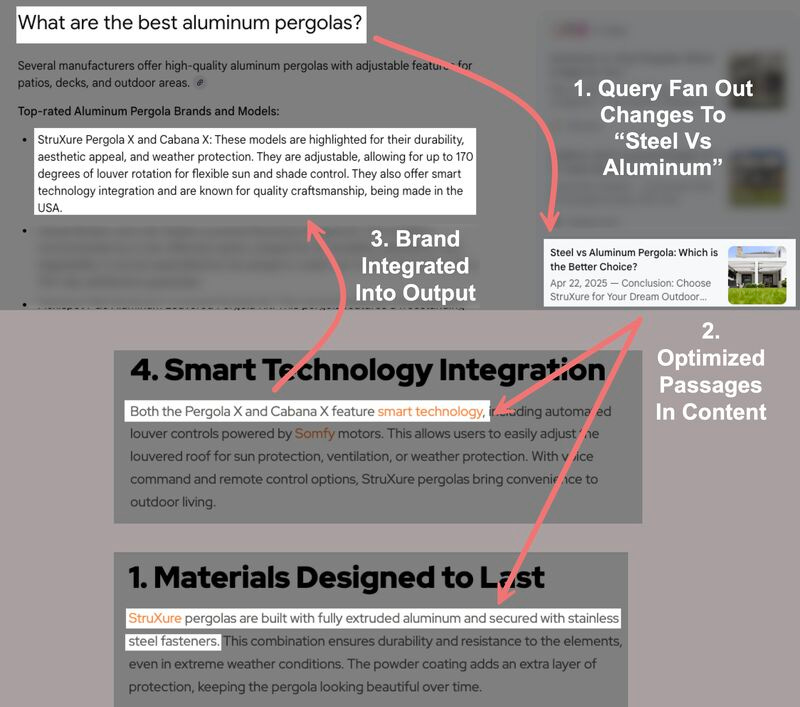
Branded search volume isn’t limited to ‘insert brand name.’ It can be ‘insert brand name + core search term.’
Telegraph Sport, for example.
Search engines and AI agents want to know that people actively search for your brand and what you do. This doesn’t just need to lead to homepage visits. You should create this demand yourself. Just look at what Ahrefs did with their research and superb content around AI Overviews recently.
Earlier in 2024, Gartner predicted that search volume would drop by 25% by 2026 due to LLMs and the agentic web.
So you have to build products and tools that deliver the same kind of value. Value that cannot be summarised by LLMs and demands citations from bloated chatbots.
And, you know, the people you actually design the tool for.
Know your audience (who are they? Where are they? What do they need?)
Solve their problem(s)
Drive repeatable value. Convince them to return. Unique content. Great customer service. Standing out et al.
Content like The Times Rich List is a perfect example of this. It’s repeatable. Frequently cited. Frequently copied. Creates a clear brand. And, frankly, relatively straightforward. A marketer’s dream. It creates relevant buzz and stories.
Backlinks and citations
Google has run off links and clicks for a long time. While the value of links has declined, arguably on par with the growing value of user engagement, the infallible backlink is on the rise again.
Well, sort of.
Not that they ever went away. But the rise of engagement metrics has led to a comparable drop in the value of backlinks. Which leads me on to an interesting question…
Do you think you could improve the ranking of your page by steadily increasing backlinks?
Maybe. Could you in a few years? Would it be a good use of time?
I doubt it. But AI may be changing that at a brand level.
We know that LLMs derive ‘usefulness’ from pages and passages using PageRank. This means that quality sources for LLMs to draw from are still, in part, determined by PageRank's assessment of authority and trustworthiness.
Behold, the glorious return of the link spammer.
Like Jesus, they walked the earth for 40 days and nights before inexplicably returning with something resembling fish and bread. I’m a little hazy on the literature, but something along those lines.
So build tools, products and content that demand a link and a citation. Products and tools that stand the test of time. That really add value to your audience. That can’t be synthesised effectively.
Personal brands and authorship
Leaving things like EEAT and structured data aside for the minute, this is an under-utilised opportunity for publishers IMO.
Whilst you can’t force writers to share their content and stick their head above the parapet. It’s the equivalent of branded traffic. People don’t just buy from or trust brands. They trust people. They want to connect.
So whilst you can’t run an electric current through a newsroom (I assume?), you can encourage the right behaviours. Writers who people follow, search for, appear on podcasts and and share their content on social media should be rewarded.
That is behaviour that will serve the business and the individual.
This is where connecting the dots is so important. Entity SEO has been around for some time and Google’s Knowledge Graph is the perfect example. Unambiguous. If you have brilliant authors with genuine expertise, you have to shout about it. To people and bots.
We know this carries weight in Google. And LLMs are word predictors. They ingest data and synthesise responses. What you say about your brand and your people really matters - as we know from updates to Google’s Quality Rater Guidelines.
Structured data is a surefire winner in almost every scenario.
Digital PR
I love digital PR. It was like sales in the nerd world. Get a link. Ring the gong. Go for a drink. Great fun.
As publishers, we sit on the other side of the link matrix. We are the targets. And this isn’t necessary for everyone. If you’re a huge brand with a really strong presence in the right areas, is this going to be a priority?
Probably not.
But if you’re a bit part player. Or you’re entering a new market, you should consider dipping your toes in the water. If you need to spike your backlink profile and garner some interest in your tools or services.
I am not so au fait with the digital PR world now. But combining digital PR and more traditional SEO link building was brilliant. Years ago, we used to identify seed sites and try to gain links from that source of truth.
Based on the leaked Google ranking factors documentation, there is evidence of a "seed sites" concept being part of how Google evaluates links and site trust. Which is heartening to know because we spent a long time on this.
Think of it like this. In each category there is a single seed site. The single source of truth. If your site has a or multiple links from that site, that is a tremendous signal of trust.
It turns out Google even has a ‘seed score’ metric that measures a site's trustworthiness based on proximity to seed sites.

Your link quality, velocity and proximity to seed sites matter. So, figure out who the seed site(s) in your industry are. Drive visibility with digital PR campaigns and build relationships with the actual people who work on the seed sites and those in close proximity.
Visibility that matters in a post AI Mode world will still be driven by this. Campaigns can help you get it in front of the right people.
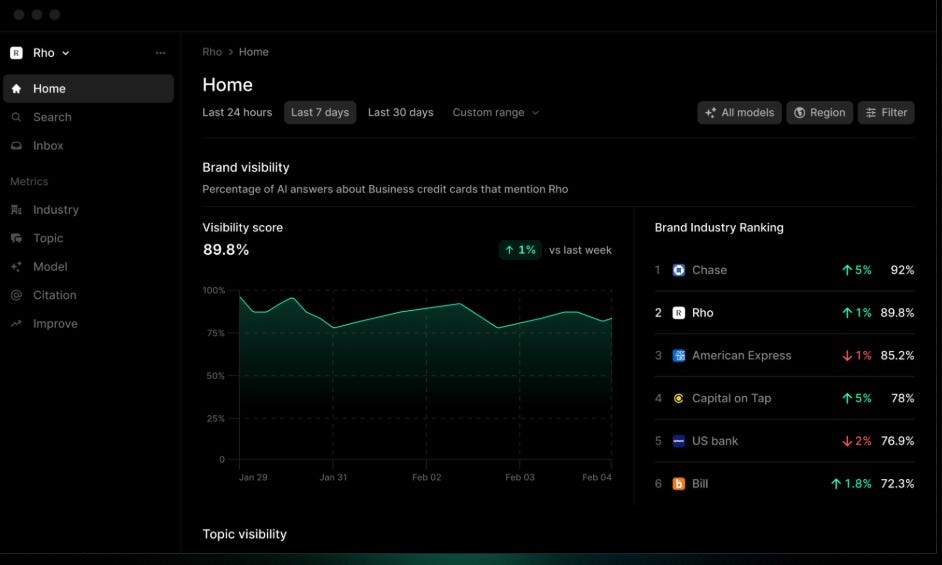
Review your topical authority. Assess how effectively you rank in the market. Determine whether brand awareness is a key issue. Then make a decision.
You can use this method Kevin Indig’s method of measuring topical authority here. I would say it’s not perfect with newsier publishers. But it serves a very good purpose. And fortunately, is very simple in Ahrefs.
Worth noting you might need to tweak the keyword list a little, but generally the best approach is to define a subcategory within a category i.e. travel > skiing and stay reltaively broad. We are trying to cover the whole topic after all.
You’ll need to track this over time. So my suggestion is to build a list and take (manual) weekly recordings of how you and your competition are faring. It’s like share of voice tracking, but at an incredible scale.
Large scale, repeatable projects
I’ve already touched on The Times Rich List. But that’s just one of many.
You can’t come up with a winning idea every year. It just doesn’t work like that. And the beauty of a project like The Rich List is in its simplicity. People remember it.
And you. They remember you.
As long as the execution is good, of course.
Brand consistency. ToV. Opinions. A humanised voice
You have to be a brand. There’s no room in an AI search driven world for brands that just answer any and every question out there.
You have to be somebody. You need some sauce. You have to have and speak to an audience. If you’re still dining off ‘what time is’ or ‘how to,’ you’re in trouble. This is the era of original content. Of real brands with real audiences.
You need to be human. I know this may be hard for some of you. But forget about the great grift of the moment - vector embeddings, chunking et al. Focus on creating content that people really care about. Get people talking. Citing. Linking.
Make. Some. Noise.
You have to commit. This can be really tricky. Particularly if it’s a pivot that involves entire workstreams.
I think your best bet is to;
Analyse the type of content that adds real value (it should solve problems)
Run the above topical authority style work
Run some site structure and link mapping work. Visualise your website
This should help you understand what the genuinely important sections of your site are
Strip things back. Have real focus and clarity. Rebuild.
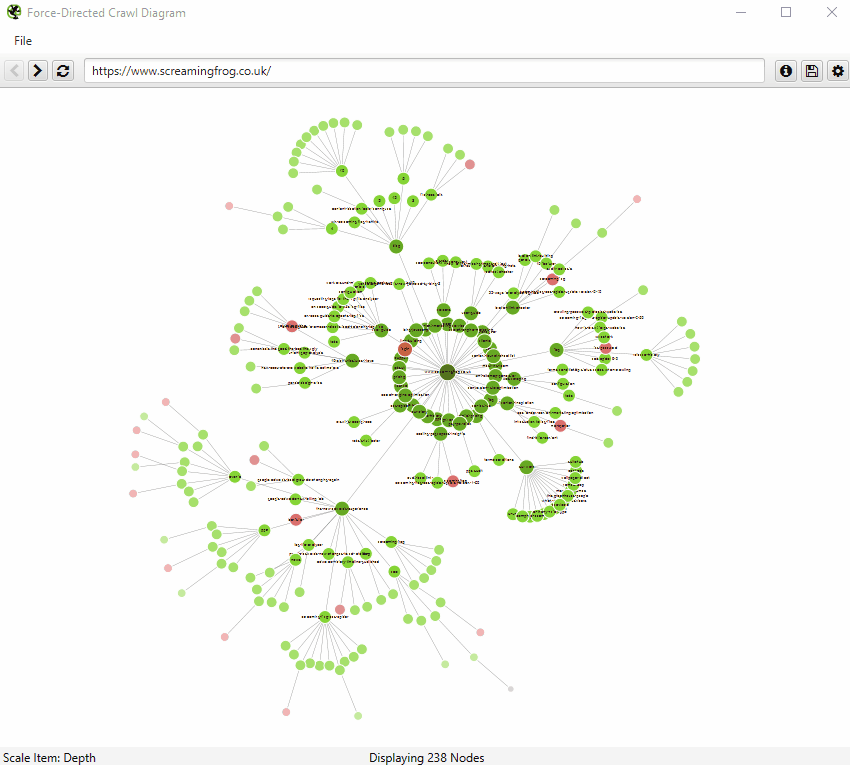
This isn’t a substitute for spending time understanding your audience. Their habits. Problems. Influences. It should be run in tandem.
Remove the branding and authorship from your website. Would your target audience know it was you? Visually and opinion-wise do you stack up and stand out?
IMO, this is a good acid test for your brand consistency and ToV.
AI Mode appears to benefit from a multi-modal content strategy and text-based content alone cannot fully endear yourself to users. Much like I expect Top Stories to work, there is a finite number of slots available for a given content type.
It makes sense to diversify.
So if you’re covering a story or highly relevant long-life content, your text-based content may not just be limiting. You might be left out altogether.
Video. Audio. Visual representations. Things we should’ve been doing for years, but haven’t had to. I think this does force our hand. Our visibility and influence in the right places (not just in Google) will rely on a fully fledged content ecosystem.
In terms of how traditional SEO can add value here, topical authority and crawl efficiency are still crucial. Maybe more so than ever.
Does all of our content serve a purpose?
Does it add value outside of the existing corpus of information out there?
I highly recommend Screaming Frog’s latest update here
For some reason, since the rollout of AI, I’ve felt comfortable saying the word corpus. I’ve never said it before. Never. It’s virtually alien to me. But AI does funny things to a man.
Google’s AI system classifies the query type to help the system return the right response. This means the output - video, listicle, audio summation et al - is personalised.
As it utilises passage level indexing and can transcribe videos amd podcasts, the format you choose is key. Your content may be utilised, but not cited. The dream.
Sentiment and reputation management
The Google Leak. We meet again my old friend.
There are multiple factors related to sentiment, reviews, and site reputation management. They are primarily associated with content quality, user perception, and external signals, particularly in YMYL contexts.
A couple of my favourites;
reviewsSentimentScore - sentiment analysis score based on user reviews, impacting ranking
offSiteMentionScore - evaluates mentions of the site/brand across external reputable domains, boosting or harming credibility
What people say about your brand matters. The experience you create matters. I refer you back to the turd polishing analogy. Until you can improve what your customers say about you, you’re suppressed.
It may be something as simple as encouraging reviews from the people you provide a good experience to. It doesn’t need to be fancy.
Here’s what I would do;
Analyse your online sentiment and reviews. This should be the foundation of your plan - what are people complaining about? How can we solve that?
Speak to your CS team
Find out what people really think about your brand
Use that to properly answer branded queries on your FAQ page (maybe a tool like Also Asked here would add a lot of value)
Compare this to your competition
Remove pain points
Encourage reviews from satisfied customers
Answer negative reviews
How do we measure it?
There’s been a lot of ‘we need new OKRs’ chatter recently. Not without good reason.
Clicks are drying up, so the industry tries to protect itself.
“Clicks didn’t matter anyway. We’ve always traded on influence.”
You and me both, sunshine. You and me both.
My sarcasm doesn’t detract from the fact that we do need new OKRs in SEO. I’m here to make a play for brand-focused metrics. For a couple of main reasons;
Everyone loves brands. People. Google. LLMs. So it makes sense to focus on KPIs that drive brand strength
They’re pretty easy to track. Well, not all of them. But lots of them are already fully serviceable by existing tools
Here’s what I think we should track;
Branded search volume. Of your main brand name and brand + product/service you want to improve
Anchor text: Like branded search volume, I want to see highly relevant, brand and keyword-rich anchor text linking to your site
Review scores: Pick your review platforms. On and off-site. Focus on your audience and try to solve their problems. Encourage good reviews and respond to bad ones.
AI brand visibility. Ahrefs lets you track brand visibility in AI platforms. If not you can go whole hog and use Profound or build your own tool.
CTR. Outperforming your expected CTR is an excellent sign that your brand is trusted by users. This is one of my favourite tactics and KPIs because it’s so simple to trial.
User engagement. Dwell time, on-page interactions, scroll depth, bounce rate, downloads et al. The metrics that matter to you and your site.
This looks like a lot, but it’s a good evolution of search.
The variety within SEO has always taken me. The chance to learn new platforms and add value elsewhere across the business creates opportunities. You just need to take them.
As always, hit me up, let me know what you think etc etc.





